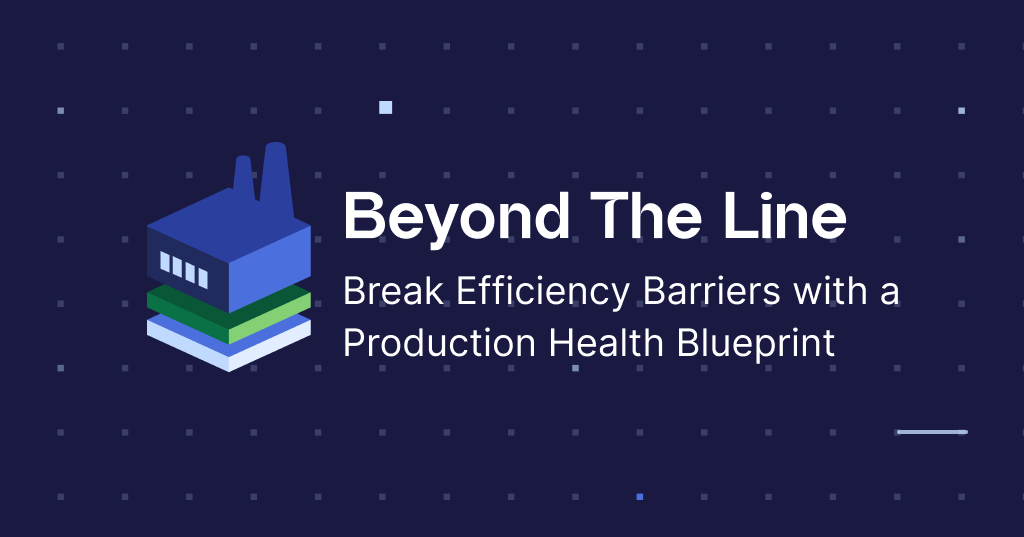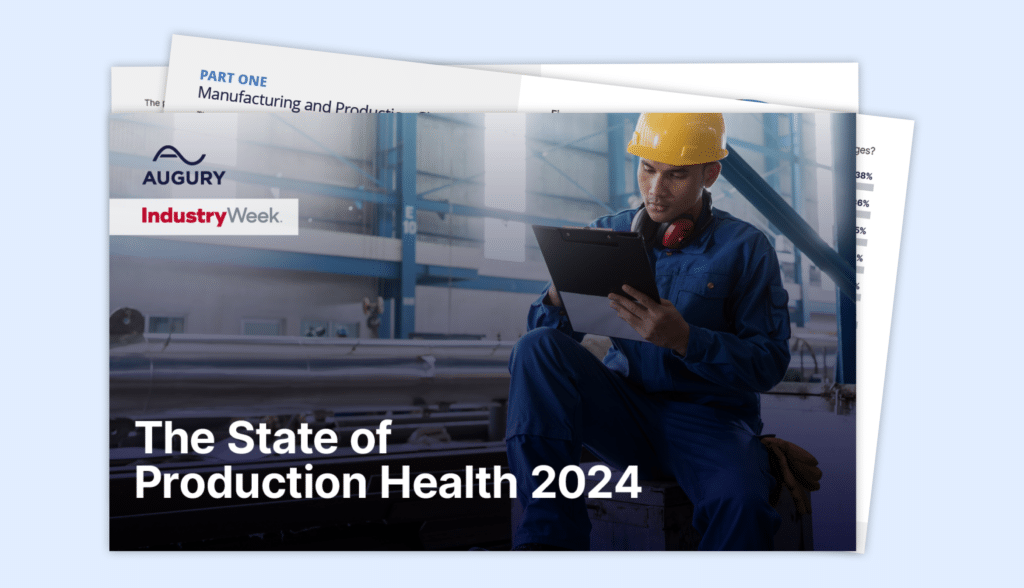
As a lead-up for Augury’s Beyond The Line event on June 18th 2024, Augury Co-Founder and CEO Saar Yoskovitz presents a three-part series on how new technologies are aligned to help manufacturing meet its many different, and often conflicting, goals. For part one, Saar begins by outlining the industry’s many sandtrap-like challenges. But rest assured, he’s just setting us up for a clean shot towards a happy ending
I’m not a professional golfer by any stretch, but I can imagine the kind of nightmare these folks could have. It goes like this: you’re approaching the 18th tee with a chance to win a championship. Your fans are eagerly watching; your sponsors are expecting a great outcome; all your hard work over the years is about to pay off. But you look at your golf bag; all your clubs are bent and broken. You have nothing to hit the ball with – and no way to satisfy your audience and achieve your goals.
Hard To Win
This is a somewhat weird scenario, perhaps. But that’s how nightmares go. And for manufacturing leaders today, there’s a similar bad dream unfolding. But this one’s real, and not waiting for nightfall to cause stress.
Manufacturing leaders might not have rabid fans or enthusiastic sponsors behind them, but they do have demanding customers, impatient investors, talented employees, and sharp-eyed regulators – and they are all watching to see how well you perform. Success isn’t measured in low scores or championship wins but in metrics such as repeat purchases, earnings per share, worker retention, and sustainability goals.
But like that sleepless golfer, when today’s manufacturing leaders look into their bag, they don’t like what they see. The traditional tools are no longer in the same shape they used to be.
You Need A Whole New Bag
None of these targets are easy to hit individually – never mind balancing each against each other. For years, those manufacturing leaders have had a strong and varied set of tools to use to achieve success – their bag of clubs, if you will. For instance, they could outsource manufacturing to lower cost countries or pressure suppliers to keep costs under control. They could dial up or down the workforce size or the number of their facilities to match changes in demand. They could adopt new technologies and new work processes to increase efficiency. And more recently, they could enjoy strong pricing power to pass higher costs onto customers without risking loyalty.
But like that sleepless golfer, when today’s manufacturing leaders look into their bag, they don’t like what they see. The traditional tools are no longer in the same shape they used to be. So, while customer demands, shareholder expectations, and regulatory burdens remain or grow, the tool bag looks pretty empty for today’s manufacturers.
It’ll sound pretty discouraging but don’t despair.
Disclaimer: Good News Ahead
I’ll use the remainder of this post to detail how the macro environment has emptied the tool bag for these leaders. It’ll sound pretty discouraging but don’t despair. In follow-up blogs, we will explore how a different set of macro trends are coming together to create new opportunities to transform manufacturing – a new bag of tricks for leaders to draw on to continue to drive their business forward.
We will also talk about the trends themselves, how manufacturers will have to think about putting them to work, and what they should expect or demand from their partners and suppliers, who will be critical for delivering the solutions that turn these new possibilities into real-world answers.
So let’s dig into the nightmare first, but with the optimism that we will all wake up to find there’s actually a brighter day ahead for manufacturing leaders.
We’ve gone from a ‘just in time’ supply chain optimized for efficiency to a ‘just in case’ approach centered on risk.
Ready for the next era of efficiency?

The Rethinking Of The Global Supply Chain
For decades, leading consulting organizations, economists, and even global geopolitical strategies drove the idea that the key to improving manufacturing efficiency was leveraging the lower costs and high efficiencies of global manufacturing. The idea was that cheaper labor, affordable shipping, and relative global calm would make it possible to produce goods in the least expensive locations and then sell them in the richest markets safely and efficiently.
Unfortunately, this strategy has been put into doubt by a confluence of factors: rising costs in those countries (who knew their workers would want to get paid too?!?), constraints in global transportation networks (remember COVID, the Ever Given, and more recently the Baltimore Port disaster?), and an increasingly nationalistic political climate rife with wars of both the tariff and shooting kind.
As a result, supply chain resilience has too often come to mean giving up cost efficiency to gain safety and predictability or to placate political policymakers. We’ve gone from a ‘just in time’ supply chain optimized for efficiency to a ‘just in case’ approach centered on risk. To localize those global supply chains, many countries are investing billions of dollars – or even a trillion dollars in the case of the US. And this is a task that will take years to accomplish, assuming the political will remains…
So, there’s all that…
But those suppliers rely on the same bag of tricks as every other manufacturer, so they are also finding it harder and harder to find new efficiencies.
The Squeezing Dry of the Supplier Network
Meanwhile, leading manufacturers have been great at doing all they can to make cost issues their supplier’s problem through massive cost pressure on supplier networks. This has had the benefit of squeezing inefficiencies out of supplier networks, materials costs, and such.
But those suppliers rely on the same bag of tricks as every other manufacturer, so they are also finding it harder and harder to find new efficiencies. They’re starting to push back on their own customers and forcing those further down the line to look for other avenues to reduce cost or increase efficiency.
The Growing Power of the Worker
Certainly, the workforce is no longer a place to go for cost savings. As with other industries, layoffs and hiring cycles have always been a part of managing costs and capacity in manufacturing. When workers were plentiful and had limited options, this approach was easy to implement. New workers (or furloughed ones) could be brought in relatively quickly – and thus limiting the risk of reducing the workforce during slow times.
Today, however, manufacturers struggle to fill even their currently available jobs. New plants are slow to come online even with billions in construction incentives because workers can’t be found to fill them. This scarcity of new talent is exacerbated by the ongoing retirement of the current experts, draining institutional knowledge and practical experience. These losses will take decades to replace without new approaches such as skills-based hiring practices, on-the-job training, and actively appealing to younger generations by, for example, more actively addressing their concerns around sustainability.
Regardless, companies are increasingly unwilling to reduce headcount in technical and manufacturing roles because of the risk they won’t be able to backfill those roles – or replace that experience – down the road. Add to that the ability of workers in this time of scarcity to demand higher wages, everyone is now very aware of how we need to look elsewhere to cut costs.
The Limits of New Work Processes (Manufacturing Creates Boat, Then Misses Boat)
More advanced companies embraced processes around Total Production Maintenance (TPM) and Lean Manufacturing, hoping that more cross-functional, agile teams could wring new gains out of productivity. While those processes made an impact, limits were reached because of constraints beyond anyone’s control.
While islands of people could quickly be reorganized into cross-functional teams, the islands of data tied to each part of the process could not be so quickly integrated. Like the blindfolded men and the elephant, even though the teams could speak together and plan together, they were still forced to see the manufacturing process through disparate lenses. As a result, data-driven decision-making was slow at best and impossible at worst.
But while execution did not live up to expectations for manufacturing, the concept around TPM has been proven, ironically, outside of the industry that developed it. For instance, software development and sales and marketing were able to more readily integrate unified goals and the sharing of the same real-time data and insights to fundamentally change how they worked. As terms such as Agile and Empowered Teams became universal, DevOps and then DevSecOps became common practice for software development, and integrated sales and marketing ‘pods’ emerged in business-to-business selling.
And while other industries now have their Salesforce and Atlassian based on inspiration from manufacturing, the industry that originally pioneered this approach still lacks the tools to make this game-changing shift on a large scale. (Until now…)
The Changing In The Power of the Purse
And really, the manufacturing sector obviously needs all the help it can get. As they do battle with a shifting landscape as outlined above to stay in business, they must also still forge ahead in meeting sustainability goals – defined by both government regulators and public pressure – while also making sure they still cater to consumer demand.
Manufacturers can no longer look to their customers as the solution to their own rising costs or continued inefficiencies.
Certainly, in more recent years,the supply and demand curve has been greatly distorted by the COVID-19 pandemic and subsequent government responses. Apart from the absence of goods on shelves, inflation skyrocketed even as consumers saw increased spending power due to COVID-related subsidies and other related government stimulus across many countries. This enabled manufacturers to pass higher costs on to consumers and, in some cases, increase profits in the process.
Today, as those factors have washed through the global economy, pricing power has become more balanced. Consumers are no longer as willing to accept higher prices, and instead do more comparison shopping and bargain hunting. And in some cases, governments have ridden the consumer frustration wave and threatened penalties for ‘price gouging’.
This means manufacturers can no longer look to their customers as the solution to their own rising costs or continued inefficiencies. Meanwhile, increasing interest rates have pulled the rug from under the manufacturer’s feet by also working to decrease consumer demand.
And From Here?
So here they are – the world’s manufacturing leaders – staring at a long drive to the flag, all eyes upon them, but knowing that the tricks and tools that have served them so well for the past years and decades are no longer in their bag. Time is ticking down for them to make their next play. But what’s it going to be?
Read Part 2 of Beyond The Line: ‘A New Bag Of Tricks’
Read Part 3 of Beyond The Line: ‘Bringing The Manufacturer’s Dream To Life‘
Ready for the next era of efficiency?





